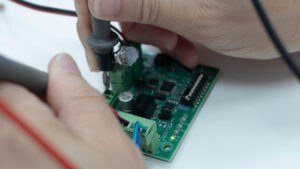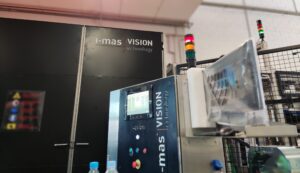Real-time defect detection is essential to maintain quality and efficiency in production processes. The integration of deep learning models has revolutionized this field, allowing anomalies to be identified more accurately and quickly.
In this article, we explore the applications of deep learning models, their advantages and how these technologies are applied in real-time defect detection.
What is Deep Learning and how is it applied to defect detection?
Deep learning is a branch of artificial intelligence that uses deep neural networks to analyze and learn from large volumes of data. In the context of defect detection, these networks can be trained to recognize patterns and anomalies in images or signals of manufactured products. For example, in the inspection of metal surfaces, convolutional neural networks (CNNs) are used to automatically identify defects such as cracks or imperfections, improving accuracy and reducing reliance on manual inspection.
Advantages of using Deep Learning in defect detection
Deep learning models can identify minute defects that might go undetected in traditional inspections. This is especially useful in industries where product quality is critical.
On the other hand, the implementation of these technologies allows automating inspection processes, reducing the need for human intervention and minimizing errors associated with the human factor.
In addition, deep learning-based systems can be adapted to different types of products and defects, making them versatile for different industrial applications.
Practical applications of Deep Learning in industry
Multiple industries have adopted Deep Learning models to improve their quality control processes. For example, in the manufacture of printed circuit boards (PCBs), Deep Learning-based object detectors have been developed to identify defects in real time, increasing efficiency and reducing costs. Likewise, in the automotive industry, these technologies are used for the inspection of parts, ensuring that they meet quality standards prior to assembly.
Challenges and considerations in the implementation of Deep Learning
Despite its advantages, the implementation of Deep Learning models in defect detection presents challenges:
- Data requirements: These models require large volumes of labeled data for training, which can be costly and laborious to obtain.
- Computational capacity: The processing of complex models requires specialized hardware, such as GPUs, which implies a significant investment.
- Maintenance and updating: Models should be updated periodically to adapt to new types of defects or changes in production processes.
Future perspectives and evolution of Deep Learning
The continuous evolution of Deep Learning and its integration with other technologies, such as the Internet of Things (IoT) and cloud computing, promises even more efficient and accurate defect detection systems. The trend towards Industry 4.0 drives the adoption of these intelligent solutions, improving productivity and quality in production.
In short, we can say that the application of Deep Learning models in real-time defect detection represents a significant advance in industrial quality control. Although there are challenges in their implementation, the benefits in terms of accuracy, automation and adaptability make these technologies a valuable investment for companies seeking to remain competitive in an increasingly demanding market.
Deep Learning at i-mas
At i-mas, we are experts in developing specialized machinery for process automation, from mechanical design, manufacturing, assembly and commissioning. All our equipment includes Deep Learning technology, allowing us to provide tailored solutions that meet our clients’ needs.
One of the most striking projects we have developed at i-mas, is a machine for container identification using Deep Learning. Its goal is to identify the type of container, considering that there are 9 different options, with an accuracy rate of 99.99%. In this project, a Deep Learning model with redundancy was implemented to increase the hit rate.
Want to learn more about our services? Get in touch with us!



